Airfix 1/48 Sea Fury
Since there is some kind of "glitch" at Modeling Madness (under repair I am told) I am posting this earlier than usual.
The Airplane:
Had the Hawker Sea Fury arrived on the scene one year earlier than it did, its place in history would be assured by the outstanding combat record it would undoubtedly have achieved with the British Pacific Fleet in the final struggles of 1945. As it is, the Sea Fury - designed for air superiority - is known for shooting down only one opponent, a MiG -15 on August 2, 1952, by Sub-Lieutenant Brian “Smoo” Ellis of HMS Glory's 802 Squadron. Given that in the intervening five years between its appearance in squadron strength and that day in 1952 technological development had rendered the Sea Fury obsolete, its victory over the MiG-15 is even more remarkable. Regardless, the Sea Fury is the penultimate result of Sir Sidney Camm's philosophy of piston -engine fighter design.
The Sea Fury began life in 1942 with a request by the Air Ministry that Hawker Aircraft design a long -range fighter for operations in the Far East. While a radial -engine version of the Tempest was under development at the time, it was thought that the relatively high wing-loading of the Tempest would be ill-suited for combat with the lightly-loaded Japanese fighters, and thus the Sea Fury started out as the "Tempest Light Fighter (Centaurus)." In early 1943, the designers were directed to adapt the fighter for shipboard operation as well as the land-based role.
The first RAF prototype flew in September 1944, while the first navalized prototype flew in February 1945. Tests revealed a need for an increase in vertical fin and rudder size to counter the swing on take -off, while the rigid engine mounts created difficulty until they were replaced with dynafocal-base mounts which completely eliminated the vibration at lower speeds that had hampered the airplane's ability to land aboard ship, along with a five-blade prop.
While the Royal Navy was testing both the Meteor and the Vampire and had ordered the Supermarine Attacker, there was sufficient doubt about the ability of jets to operate off carriers that the Royal Navy continued to develop the Sea Fury as a shipboard interceptor and later as a fighter-bomber. With carrier compatibility trials completed in 1947, 807 Squadron was the first to convert to the aircraft, followed by 802, 803 and 805 Squadrons between August 1947 and February 1948. The initial Sea Fury Mk.X was quickly replaced by the F.B.11, which could carry underwing drop tanks, bombs and rockets, and the squadrons began to equip with the airplane in May 1948.
The Sea Fury in Korea:
The Sea Fury arrived in Korea as part of HMS Theseus' air wing in 807 Squadron, when that carrier replaced HMS Triumph shortly after the Inchon invasion. The Sea Fury saw its first combat operation on 10 October 1950, when four of the Hawker fighters led by Air Group Commander Lt Cdr Fred Stovin-Bradford attacked an ammunition dump south of Chinampo. The group commander's wingman, Lieutenant Stanley Leonard, was hit by flak on his attack run and crash landed in a rice paddy, breaking his back in the crash. The three Sea Furies above kept North Korean troops at bay until an HO3S-1 from Cho-do Island arrived and rescued Leonard. During the UN retreat out of North Korea following the intervention of Chinese forces in November, the two Fleet Air Arm squadrons aboard Theseus provided cover for Eighth Army units in the retreat out of western North Korea.
One problem faced by Sea Fury pilots aboard the British carriers was described by 802 Squadron's Sub-Lieutenant Russ Mallace: “To fly, a Sea Fury needs 90 knots of airflow over the wings. So with the ship doing 22 knots in calm air you would just about have enough airflow over the wings to get airborne. The ship always turned into wind to launch and recover aircraft but the name Korea means ‘Land of the Morning Calm' so windless mornings were not uncommon. With 1,000-pound bombs mounted, more like 95 knots was needed so RATOG, (rocket assisted take off), was used instead of the catapult. Rockets were attached to the underside of the aircraft and the take off run was started from the stern of the ship. At a predetermined point on the take-off run you would fire the rockets and heigh-ho you hopefully found yourself up in the air. All good fair-ground stuff! The rocket carriers were jettisoned after take-off.”
Timing the firing of the rocket pack by the pilot was crucial. The rockets were not reliable, and more than one pilot discovered himself with full throttle and brakes off trundling down the deck with a rocket mis-fire which meant going in the water since the rocket-firing point was too close to the bow to allow an aborted take off. Asymmetric firing could put the airplane over the side.
Oh, another thing about Sea Furies in Korea: Peter Carmichael didn't shoot down the MiG-15 in August 1952. Extensive review of the record has now resulted in official credit for this victory being awarded in September 2017 to Carmichael's wingman, Sub-Lieutenant Brian “Smoo” Ellis; Carmichael hit the other MiG-15, which was only damaged and got away. Unfortunately, while Carmichael had sufficient rank to have “his” Sea Fury, Ellis as a squadron pilot was flying “the Sea Fury that was available,” for which there are no photos. If you want to make a “MiG-killer” your guess is as good as any.
HMAS Sydney In Korea:
HMAS Sydney, a Colossus-class light fleet carrier that was the first aircraft carrier operated by the Royal Australian Navy, arrived in September 1951 for a four month Korean deployment from September 1951-January 1952. She operated a 48-plane air group, 32 Sea Furies from 805 and 808 Squadrons and 16 Fireflies of 817 Squadron. Sydney spent 64 days at sea over seven deployments in the operational area off the west coast of the Korean Peninsula as the British Commonwealth carrier of TG 95.1.1. Of these 64 days, ten involved replenishment or passage around the peninsula between the west and east coasts, while 12 flying days were canceled due to bad winter weather. During 42 flying days, 2,366 sorties were flown with an average daily sortie rate of 55.2. Ammunition expenditure during the seven patrols was 269,249 20mm rounds, 6,359 rocket projectiles, and 902 1,000-pound and 500-pound bombs. By the time Sydney departed Korea on 25 January 1952, ten Sea Furies and Fireflies had been shot down and many damaged by flak. Casualties included one pilot killed, two missing and six wounded. Sydney's record was exemplary of the other Commonwealth carriers when they deployed to Korea.
The Kit:
Most modelers have liked the Sea Fury since they first saw a photo of one. I was fortunate to be around the 1:1 Sea Furies owned and flown by Flt. Lt. Ormond Haydon-Baillie and Lloyd Hamilton, which competed in the Reno Air Races in the 1970s; I even got the privilege of climbing up and sitting in the cockpit of Haydon-Baillie's airplane. I am a long-time confirmed Sea Fury fan.
The first Sea Fury model available came from Frog in 1/72 in the late 1960s, and I built several of them. In 1985, I discovered Falcon Models and their excellent Sea Fury vacuform kit; until the release of this kit by Airfix, the Falcon kit had the honor of being the most-accurate Sea Fury in terms of shape. I built one all-vac, and one utilizing cockpit parts, prop and landing gear of the Hobbycraft kit.
The Hobbycraft kit, which appeared in 1989, was for a very long time the only injection-molded Sea Fury kit; the wing airfoil was upside down, the prop was a bit too small in diameter, and what detail there was was heavy, but it was what was available for nearly 30 years. I built several, one of which I kept after getting all of Roy Sutherland's resin correction set. Originally the decals were very poor, but the later “Korea” release had very nice decals for Peter Carmichael's “MiG-killer” and a Royal Canadian Navy Sea Fury.
Trumpeter released a Sea Fury about four years ago, about which the less said the better. AMG released limited-run kits of the single and two-seat Sea Furies last year which are quite nice but are “fiddly” to build given their limited-run nature.
Modelers have been waiting with bated breath ever since Airfix announced in 2016 that they would release a 1/48 Sea Fury. While the kit is not the “definitive” Sea Fury everyone hoped for, it is miles better than any other and certainly “the best” kit out there of this airplane. It has a very nicely-detailed cockpit, excellent landing gear, an extensive collection of appropriate weapons loads, good decals, and wings that can be constructed extended or folded. It only misses “definitive” for lack of a gunsight (!) and poor fit of the engine cowling.
Construction:
Modelers who got the first release kits reported some “short shot” parts; my kit was from a later run (the “North American” run?) and there was no problem with any of the parts.
As with all other recent Airfix kits, if you commit the radical act of using the excellent instruction booklet and following it, you will have a very nice model as a result.
The two “problems” in the kit are easily solved.
For the absent gunsight, I used the alternative gyro gunsight from an Airfix P-51D kit, adding a mount from plastic scrap to properly position it.
As to the engine cowling, one has two alternatives: a modeler has already released an aftermarket resin replacement part, which I have seen and can say it solves the problem, at a cost around $5. The other alternative involves “some modeling skill required,” and is easy: 1) attach the engine face to the forward cowling ring; 2) carefully attach the upper part of the cowling to the forward ring, and “work the fit” of that part to match the cowling ring; 3) take the lower part of the cowling and attach it to the rear cowling ring, and again “work the part” to fit; 4) let these two sub-assemblies set up, then attach them by gluing them together WITHOUT GLUING THE CENTERLINE SEAM. The centerline will be “loose” at this point, which doesn't matter because you're going to fill it with Cyanoacrylate glue and then sand that joint into invisibility. 5) then rescribe that centerline join about 1/16 inch HIGHER on either side, since Airfix got the attachment wrong. The whole process involves perhaps 15-20 minutes of work and looks just fine when done.
As to the rest of the construction, the cockpit is easy to do. It's black overall, which I did with some Tamiya Flat Black, then drybrushed with Tamiya “NATO Black,” which is more a very dark grey. I used an Eduard photoetch seatbelt, and the kit instrument panel decal.
Since I had decided to do the RAN Sea Fury on the Aeromaster “Sea Fury Pt. 2" sheet, I did some research for photos of RAN Sea Furies, and made the discovery that the Sea Furies aboard Sydney had their rocket rails installed one to either side of the bomb rack. This allowed carriage of two rockets on the outer rail and a 1,000-lb bomb, or a rockets on each rail and a 500-pound bomb, or a rockets-only load of up to four rockets under each wing. I drilled out the holes on the lower outer wing for this layout.
Construction was straightforward overall. I pushed the control stick a bit forward and “drooped” the elevators slightly; they were held in this position by spring loading when the engine was not operating.
I decided to use the RATOG mount, which can be attached without glue, allowing the model to be displayed with and without.
Painting and Decals:
I first painted the “D-Day” stripes on the wings (the decal sheet includes the fuselage stripes) and masked them off before painting the rest of the model light grey to give a primer coat for the Xtracrylix paint to “grab.” I then pre-shaded the model. I painted the Extra-Dark Sea Grey, then masked that and painted the Sky lower surfaces. I then unmasked the model and gave it a coat of clear gloss to protect the Xtracrylix paint, which is fragile when applied in thin coats.
The Aeromaster decals went on without problem, though there was a slight gap on the fuselage stripes on the bottom centerline, which I took care of with some scrap black and white bits of other decals.
Final Assembly:
I assembled and installed the landing gear, then attached the prop, and the underwing ordnance. Photos showed the Australians used US-type bombs while in Korea, so I used that option, which is provided in the kit. I cut the rockets off the inner rails for this weapons load. The canopy was unmasked and mounted in the open position.
Overall:
This is definitely the best Sea Fury kit out there. It lacks a gunsight and the cowling is “hinky” but the situation can be resolved through the resin replacement part or the application of some modeling skill. There will definitely be more of these Sea Furies on my shelves in the future. Highly recommended for anyone of average modeling skill.
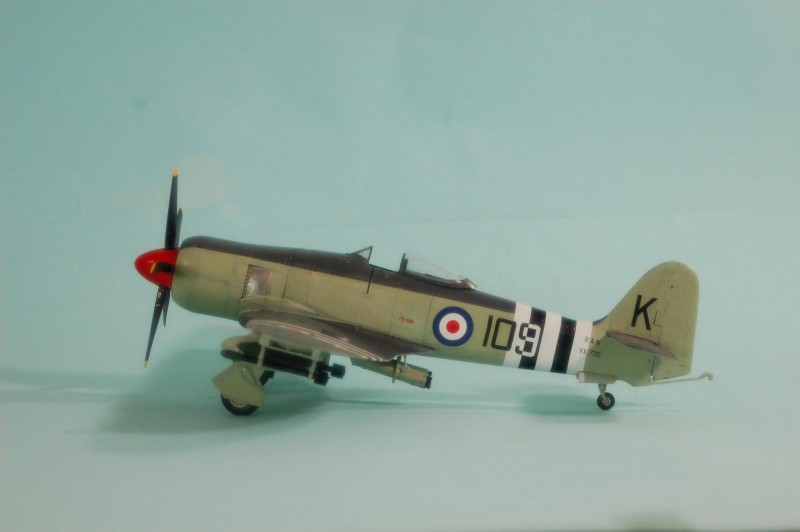
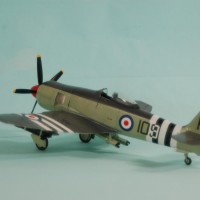
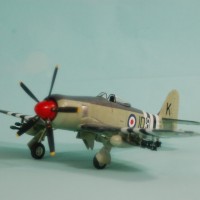
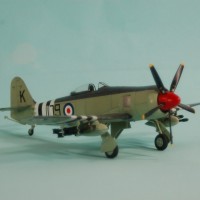


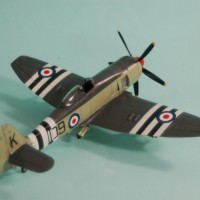
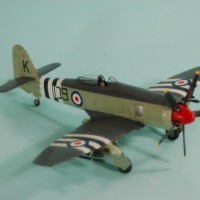
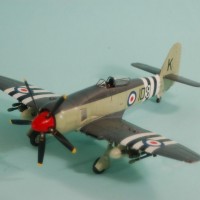
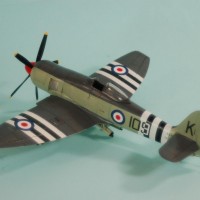
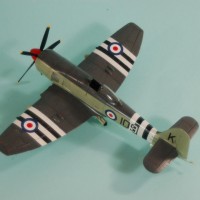
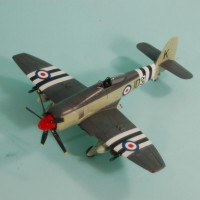
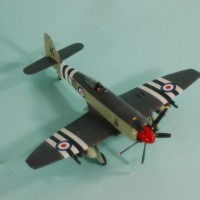

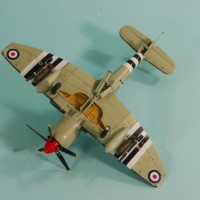
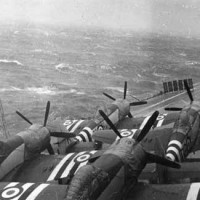
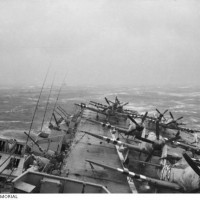

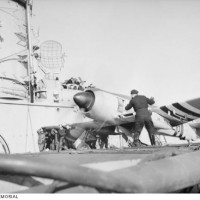

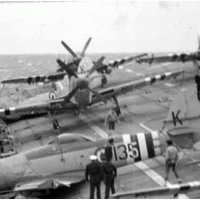
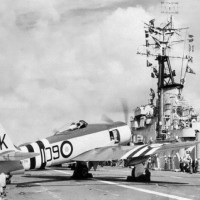
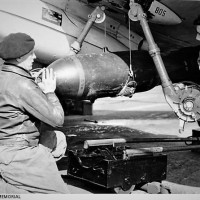
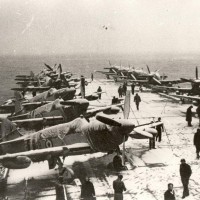
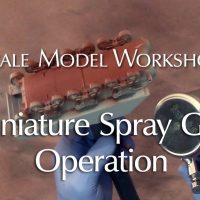
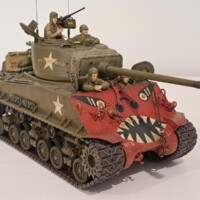
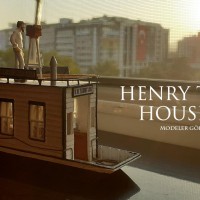
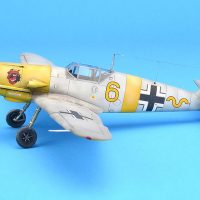
Very nice presentation, TC...the build, the pics and the backstory.
The Sea Fury sure has that muscle look of Hawker linage. Your model looks terrific Tom. One thing that I hadn’t noticed so far in other builds is the glossy paint, I assume the fleet had them polished to achieve less drag no?
Glossy paint is less likely to weather quickly.
A good point (and lovely model too). I love to watch the fifties and sixties era footage of RN carrier operations on You Tube and its quite difficult to discern the difference between what appears to be gloss finish on some RN types and a semi matt on others. Still images are even more of a minefield. I'd be inclined to go with the post war gloss finish which probably weathers to a high sheen after a few months at sea, I've yet to find images of totally matt Furies (or Sea Vixens for that matter).
This partial screen shot taken from ADF Serials image gallery web site show a distinct reflection of the RAN aircraft ID letter K on the horizontal surface. Full image here:
http://www.adf-gallery.com.au/gallery/Sea-Fury-VX730/AMOF_VX730
Of course this all flies in the face of my Hornet example!
A gloss finish will weather to a satin finish. To get to a flat finish you'd have to be operating in the tropics for a year. USN blue/grey and tri-color in WW2 were flat and after a 6 month deployment were like chalk on the airplane. Glossy Sea Blue never got more than satin.
Great to see completed examples of this kit Tom. I've got it in the stash and looking forward to it. Great commentary - wonderful photos too.
Those photos aboard the Sydney are amazing, talk about having to find your sea legs. The Sea Fury is terrific, Tom, and a brilliant 'modeler's review'.
Yes. the old USS Rustbucket was top-heavy and rolled like a destroyer in any sort of sea. The bow was 70 feet above the waterline, and once on bridge watch during a typhoon evasion, I saw green seas come over the bow, a terrifying sight.
Bring back memories?
Exactly! Only a bigger boat.
Exactly, only a bigger boat.
Ha, definitely not for me. Not in this lifetime, anyway.
Just a bit of rolling deck, nothing to worry about!
Nice work Tom, I will adding this one to the stash asap.
What would be neat is a conversion set for a Reno Racer. Get a Skyraider prop, modified canopy and wheels. Perhaps a cowling for a Wright 3350 and some decals. Or a modified canopy for a extra seat for those target tugs...
Cool mod and kit.
Hate to say this, but according to several aftermarket guys I have talked to, the reason you see so few Reno racer conversions is because nobody buys them. Paul Fisher's "Miss Merced" Sea Fury racer is the worst-selling item he has ever put out.
Nice Sea Fury! And some great deck pics.
Tom, she's a beauty!
A thing of beauty Tom! Always look forward to your informative reviews coupled to incredible insight into the history behind the aircraft and conflicts they were used in. The Fury is on my to get list in 2018! Beautiful photos suitably rounds off this nice presentation.
Beautiful job and presentation as usual Tom. You weren't kidding about the MM craziness, I was desperately looking for some of your kit reviews while perusing E bay and had the devil of a time getting through to the site. Very frustrating! Off topic, have you any experience with the Lukgraph line of products? I am kind of partial to the Curtiss line of a/c and was looking at the A-3 they have, http://www.lukgraph.pl/?p=80. Kind of pricey, but might be worth it.
Just tested the M2 website at 1545 PDT and the access problem has been resolved. Got in without problem.
I've seen a lot of your builds recently (thankfully) Tom, and I have to say this is right up there with the best of them! I'm in a 'build not buy' stage at present - I have run out of room! But this is inspirational - I've always liked the way the Sea Fury looks a little like an FW190 at the front end and knew I'd pick up the Airfix version at some point - after your post it has gone right to the top of my list.
Interestingly, the Sea Fury (like the Bearcat) was highly influenced by the Fw-190, for the tightly-cowled radial engine and the control harmony.
A great build Tom. Really looks the part. The background information & review are most welcome as I'm still waiting for the kit to arrive in Australia. I've done the Trumpeter kit, with a lot of work, but it will be nice to just have a straightforward build for a change. Thanks for posting.